Two-Day Mexico City Itinerary

Mexico City, or CDMX, is one of the largest cities in the world and a cultural powerhouse. Built on Tenochtitlán, the Mexica capital, it has layers of history waiting for you!
With only two days in Mexico City, you’ll want to maximize your time – so this itinerary is designed for culture lovers, history buffs, and food enthusiasts looking to experience CDMX’s essence while supporting local businesses and Indigenous heritage.
Mexico City is one of my favourite places in the world – and after visiting a handful of times (and counting!) – I can confidently say it’s a city that always has something new to offer!
Let’s dive into this two-day Mexico City itinerary, featuring must-see landmarks, delicious eats, and cultural experiences that make Mexico City unforgettable.
Quick Travel Resources
🛫 WISE – Multi-Currency Debit Card
🛫 REMITLY – International Money Transfer
How Many Days in Mexico City Is Enough?
Mexico City is massive – both in size and in experiences. It’s a city that could keep you exploring for weeks, with its layers of history, culture, art, and food.
But if you’re short on time, how many days do you actually need?
The answer depends on your travel style and priorities:
✔ 2 Days – Perfect for first-time visitors looking to experience the highlights: the Historic Center, Teotihuacan Pyramids, and Coyoacán. This is a fast-paced itinerary, but it gives you a solid introduction to CDMX.
✔ 4-5 Days – The sweet spot! You’ll get the best of history, culture, and food without rushing. This allows for Xochimilco, Chapultepec Park, and extra time to explore foodie neighbourhoods like Roma Norte and Condesa.
✔ 1 Week or More – If you really want to soak up Mexico City’s magic, a full week lets you dive into less touristy neighbourhoods, discover more museums, and take day trips to places like Tepoztlán or Puebla.
For this itinerary, two days is just enough to fall in love with CDMX – but don’t be surprised if you’re already planning your next trip before you even leave!
From Mexica to Mexico: Honouring the Nation’s Indigenous Roots
The name “Mexico” has deep Indigenous origins, tracing back to the Mexica (pronounced Meh-shee-kah) – the powerful civilization that built Tenochtitlán, the city that would later become Mexico City.
In Nahuatl (the Mexica language, still spoken today), “Mēxihco” means “The Place in the Center of the Moon.” This name reflected Tenochtitlán’s location, built on an island in Lake Texcoco and surrounded by majestic mountains.
Even after the Spanish conquest, the name Mexico persisted, despite colonial attempts to rename the land “New Spain.”
When Mexico gained independence in 1821, leaders chose to reclaim the name “Mexico” as a tribute to its Indigenous history.
You may be more familiar with the term “Aztec”, but this name was created by European scholars – it was never used by the Mexica people themselves.
The term Mexica is the historically accurate and culturally respectful way to refer to this civilization, as it recognizes their own identity, language, and contributions to history.
Why does this matter?
Using Mexica instead of “Aztec” helps to:
✔ Honour Indigenous self-identity rather than colonial labels
✔ Preserve the historical and cultural legacy of the Mexica civilization
✔ Challenge outdated narratives that often oversimplify or erase Indigenous histories
By acknowledging the Mexica roots of Mexico City, you’re not just learning history – you’re engaging with it responsibly and authentically.
And there’s no better place to start immersing yourself in this legacy than by exploring the Templo Mayor, Zócalo, and the ruins of Tenochtitlán – right in the heart of CDMX.
Mexico City Itinerary
Day 1: History & the Heart of CDMX

Plaza de la Constitución – Mexico City Zócalo
Morning: Arrival and Check-In
Whether you’re flying into Benito Juárez International Airport or arriving by bus, CDMX’s energy will hit you immediately.
To make the most of your time, stay in a centrally located, Mexican-owned hotel:
✔ Casa Pepe Hostel (Budget): A social, culture-focused hostel with rooftop views and tours. (Location: Centro Histórico)
✔ Hotel Villa Condesa (Mid-range): A charming boutique hotel in a leafy neighborhood. (Location: Condesa)
✔ Gran Hotel (Luxury): A historic, Art Nouveau masterpiece with a rooftop overlooking the Zócalo. (Location: Centro Histórico)
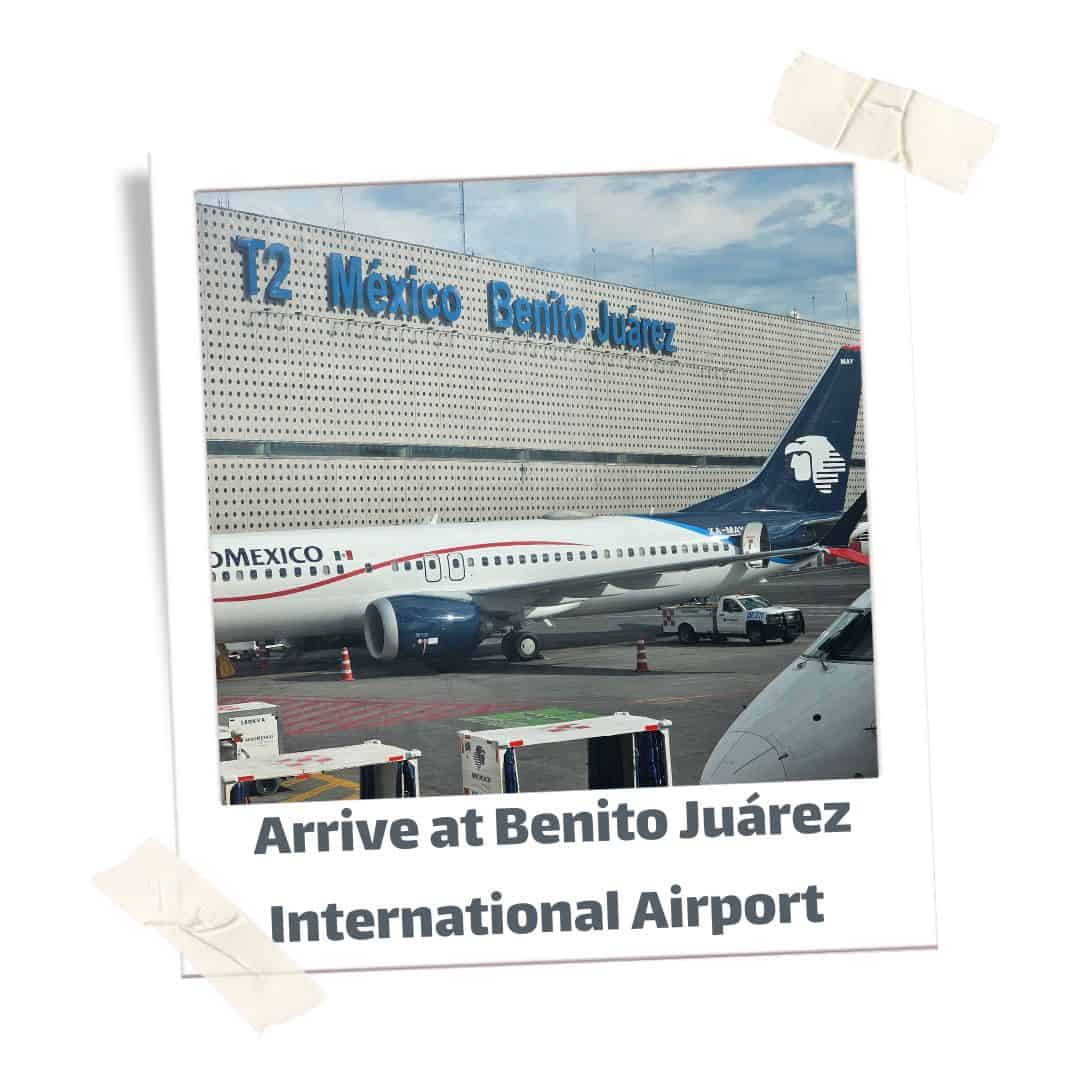
Photo © Daena Crosby
Afternoon: Exploring Mexico City’s Historic Core
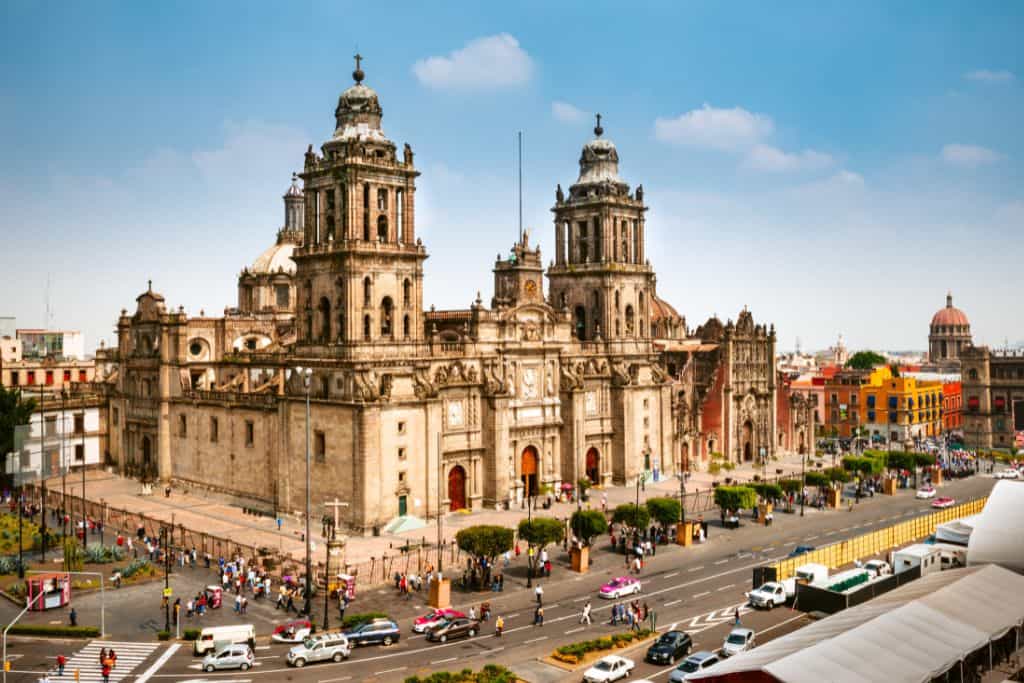
Metropolitan Cathedral, Mexico City Zócalo
The Historic Center (Centro Histórico) is a must-see for any Mexico City itinerary. This area was once the heart of Tenochtitlán, the great Mexica (Meh-shee-kah) city, before the Spanish conquest.
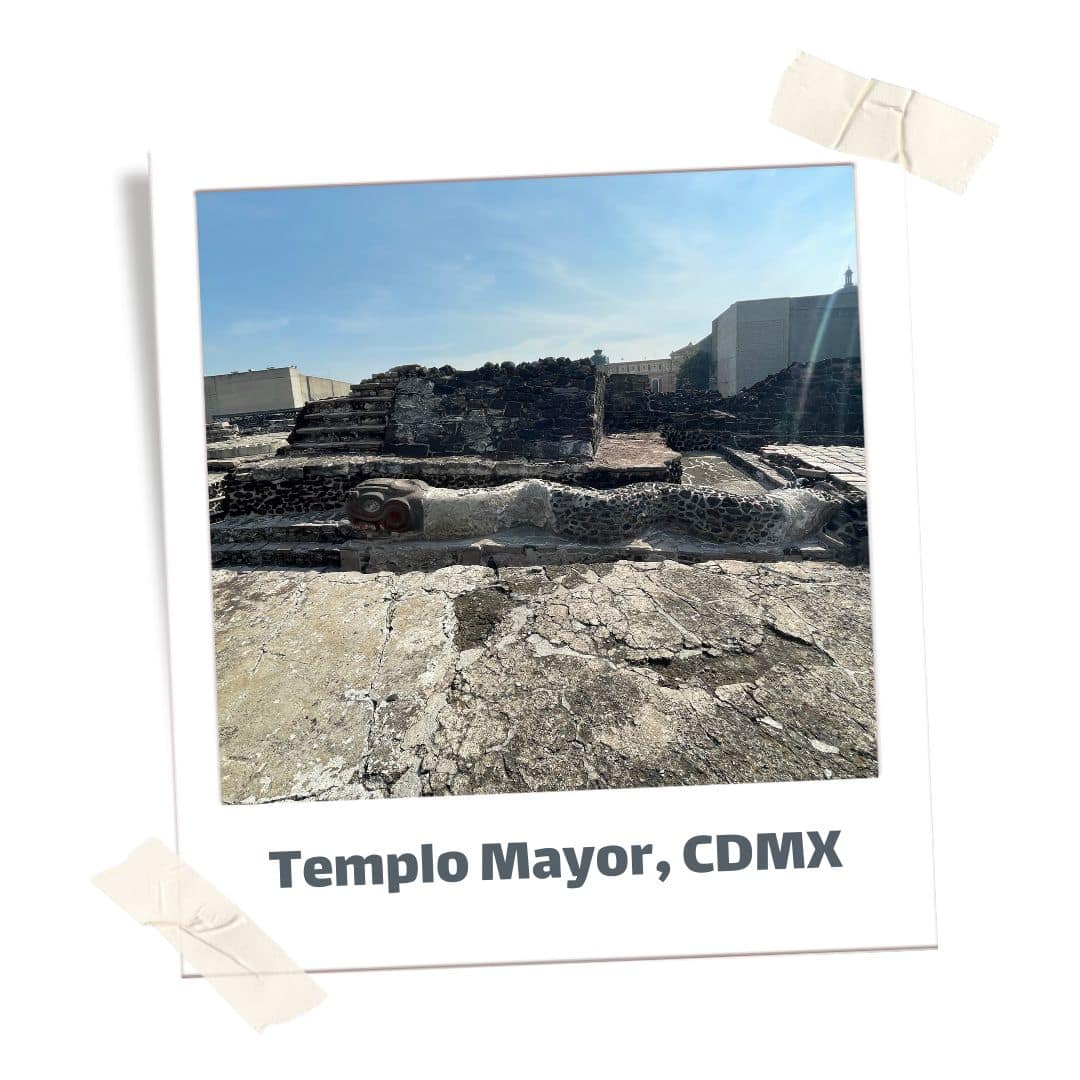
Photo © Daena Crosby
What to See in the Historic Center:
✔ Zócalo (Plaza de la Constitución): The city’s main square, a cultural and political hub since Mexica times.
✔ Templo Mayor: The remains of the Mexica Empire’s most sacred temple, featuring artifacts and massive stone carvings.
✔ Metropolitan Cathedral: A stunning mix of Baroque and Neoclassical architecture, built over ancient Mexica ruins.
✔ Palacio Nacional: Home to Diego Rivera’s famous mural, “The History of Mexico,” which vividly narrates Mexico’s past.
📍 Best view of the Zócalo
- Gran Hotel Ciudad de México’s terrace (stunning architecture + panoramic views)
- Balcón del Zócalo (rooftop restaurant with a view of the entire plaza)
Where to Go from the Zócalo:
From the Zócalo, take a short walk to Palacio de Bellas Artes, one of Mexico City’s most breathtaking landmarks.
Its golden-tiled dome and Art Nouveau façade make it an architectural masterpiece.
Inside, the building holds some of Mexico’s most significant murals by artists like Diego Rivera and Rufino Tamayo.
Even if you don’t have time for a full tour, just seeing the building up close is worth it!
If you’re a fan of the performing arts, check the schedule – this is home to the famous Ballet Folklórico de México, an electrifying showcase of traditional Mexican dance and music.
📍 Best View of Bellas Artes:
For an unbeatable bird’s-eye view, head across the street to Café Don Porfirio, located on the 8th floor of the Sears building.
Grab a coffee or pastry, settle in by the window, and soak in sweeping views of Bellas Artes and the city skyline – especially magical at sunset.

Photo © Daena Crosby

Right next to Bellas Artes, you’ll find Alameda Central, Mexico City’s oldest public park.
Originally built in the 16th century, this lush green space was once reserved for Spanish elites, but today, it’s a favourite spot for locals and visitors.
Take a leisurely walk under the jacaranda trees, which bloom into a stunning purple canopy every spring (March–April), making the park feel even more magical.
Along the way, stop by the Hemicycle to Juárez, a grand white-marble monument honouring Benito Juárez, one of Mexico’s most influential presidents.
The park is also filled with street performers, local vendors, and musicians, adding to the lively energy.
After relaxing in Alameda Central, head to Torre Latinoamericana, once the tallest building in Latin America.
The observation deck on the 44th floor gives you a 360° panoramic view of Mexico City, stretching from the historic center to the distant mountains.
Why Visit: This is the best way to see the sheer size of CDMX!
The tower also houses a small museum and a café with city views, making it a great place to rest (again!) before continuing your day.
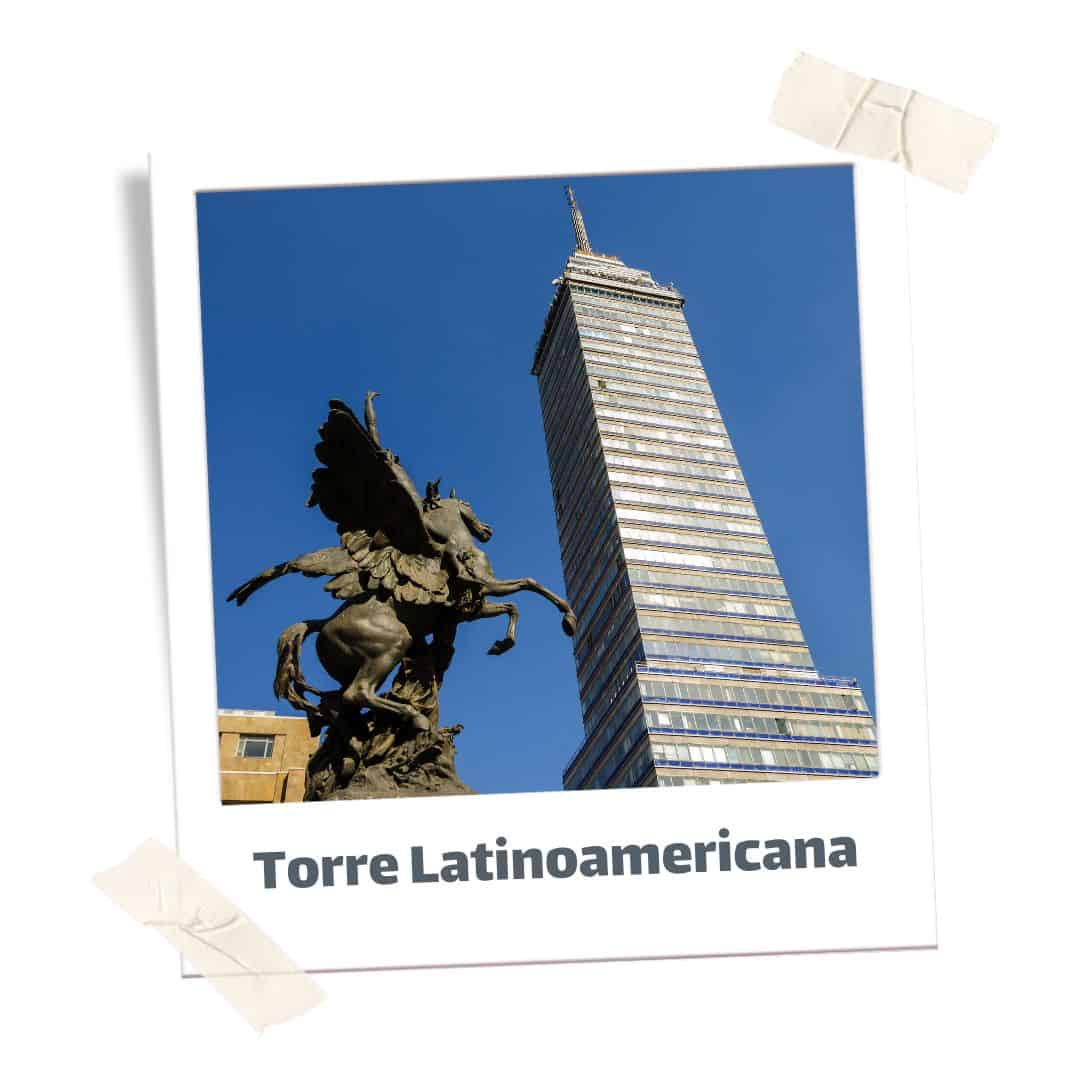

Photo © Daena Crosby
If time allows, make a quick stop in Barrio Chino, located on Calle Dolores.
While Mexico City’s Chinatown is small, it’s packed with energy, colourful décor, and delicious food.
What to Try: Grab a steamed bun (sweet bao) or a plate of handmade dumplings while exploring the mix of Chinese and Mexican cultural influences.
It’s a great way to experience another layer of CDMX’s rich immigrant history.
Evening: Food and Nightlife in Mexico City
No Mexico City itinerary is complete without experiencing the city’s world-famous food scene.
After exploring, refuel at one of these legendary spots – all Mexican-owned and full of history:
✔ Azul Histórico: Dine under fairy-lit trees in a colonial courtyard, with regional dishes like cochinita pibil and mole negro. (📍 Isabel La Católica 30, Centro)
✔ Taquería Los Cocuyos: A famous taco stand known for suadero (slow-cooked beef), longaniza (sausage), and tripe tacos. A must-visit for authentic street food. (📍 Simón Bolívar 59, Centro Histórico)
✔ Restaurante El Cardenal: One of Mexico City’s most traditional restaurants, serving hearty enchiladas, fresh-baked bread, and rich chocolate caliente. (📍 Av. Juárez 70, Centro Histórico)
✔ Café de Tacuba: A colonial-era eatery with old-world charm, known for its mole poblano, tamales, and classic Mexican breakfasts. (📍 C. de Tacuba 28, Centro Histórico)
Hidden Cocktails at Hanky Panky
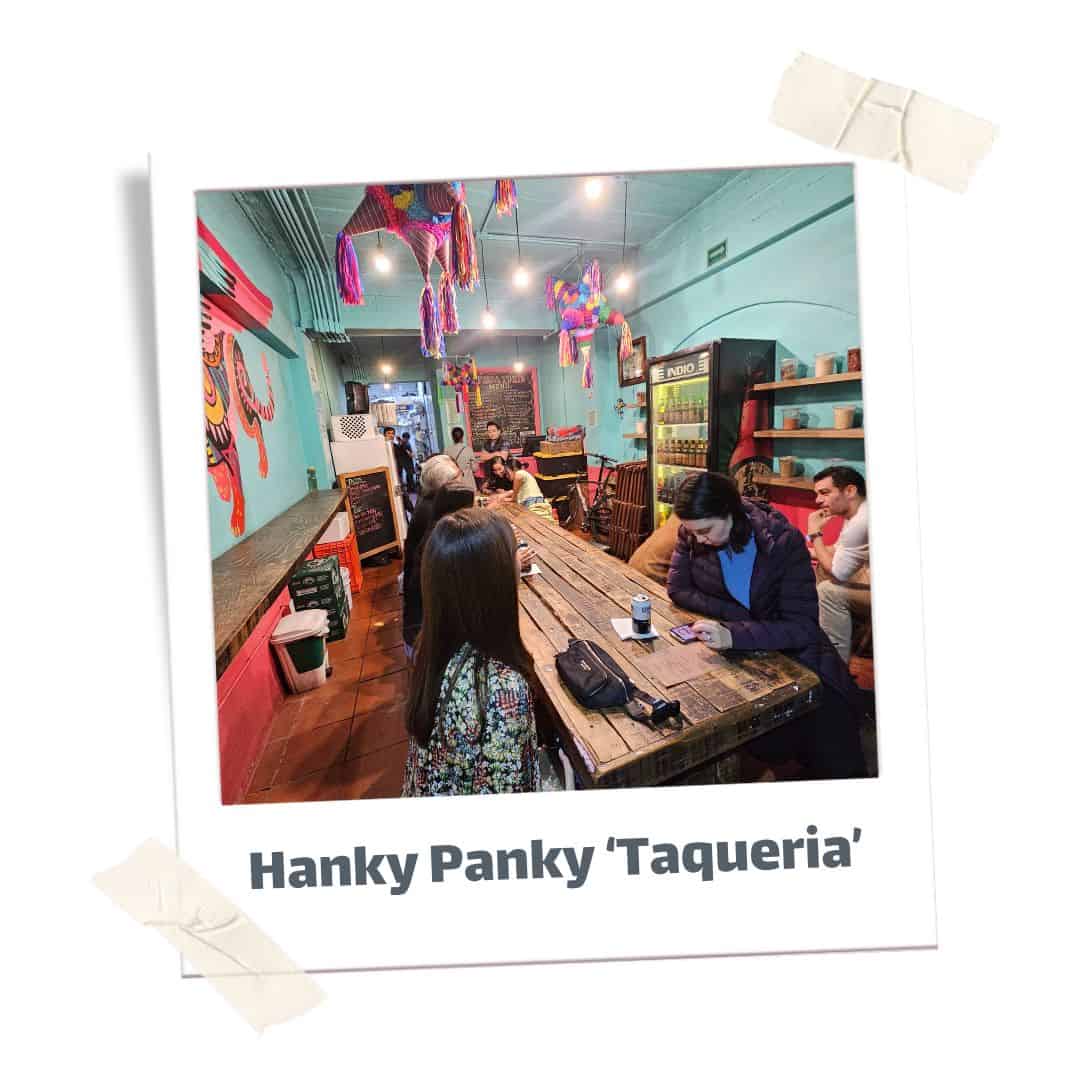
Photo © Daena Crosby
For a speakeasy experience, head to Hanky Panky, one of CDMX’s best-hidden bars.
Reservations are a must, and finding the entrance – disguised as a taquería – is part of the fun!
Inside, you’ll find dim lighting, a cozy atmosphere, and expertly crafted cocktails featuring local flavours and premium mezcal.
📍 Turín 52, Juárez, Cuauhtémoc
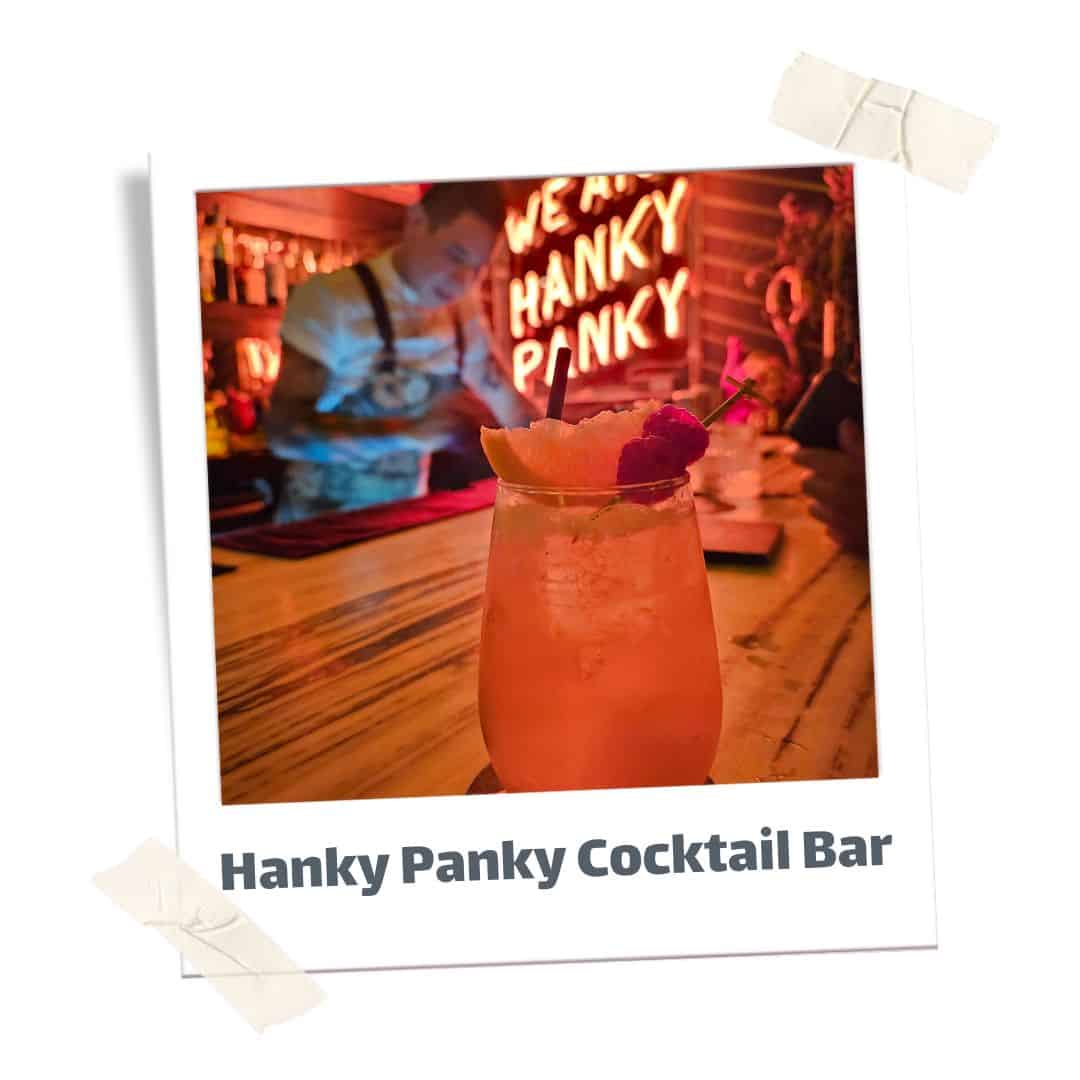
Photo © Daena Crosby
Drinks & Nightlife in Roma Norte
Cap off the night by venturing into the Roma Norte neighbourhood (just south of Hanky Panky).
✔ Licorería Limantour: One of the world’s best cocktail bars, serving Mexican-inspired drinks. (📍 Av. Álvaro Obregón 106, Roma Norte)
✔ Xaman Bar: A pre-Hispanic-inspired cocktail bar using native herbs and ingredients. (📍Copenhague 6, Juárez)
✔ Bósforo Mezcalería: A cozy bar specializing in artisanal mezcals from Oaxaca and beyond. (📍 Luis Moya 31, Centro)
Day 2: Ancient Pyramids & Coyoacán’s Artistic Soul
Morning: Teotihuacan Pyramids

Teotihuacan, “City of the Gods”, Mexico
Start the day with a trip to Teotihuacan, one of Mexico’s most breathtaking archaeological sites.
How to Get to Teotihuacan:
✔ Bus: From Autobuses del Norte terminal (Metro Line 5), take a direct bus (60-70 pesos, 1-1.5 hours).
✔ Uber/Taxi: Costs 300-500 pesos each way but is faster and more flexible.
✔ Tour Option: A local guide can provide in-depth history of the site.
What to See at Teotihuacan:
✔ Pyramid of the Sun: The third-largest pyramid in the world.
✔ Pyramid of the Moon: Offers stunning views down the Avenue of the Dead.
✔ Teotihuacan Museum: Displays ancient murals, artifacts, and the city’s original obsidian tools.
Pro Travel Tip: Arrive early to beat the crowds and the heat!
Afternoon: Coyoacán – Frida Kahlo’s Neighbourhood

Fuente de los Coyotes | Fountain of the Coyotes
Photo © Daena Crosby
After Teotihuacan, head back to Coyoacán, one of Mexico City’s most charming and artistic neighbourhoods. With cobblestone streets, colorful plazas, and a rich cultural legacy, it’s a perfect place to spend your final afternoon in Mexico City.


Photo © Daena Crosby
Must-See in Coyoacán:
✔ Frida Kahlo Museum (Casa Azul): The former home of Frida Kahlo, filled with her artwork, personal items, and deep insights into her life. (Book online in advance! No same-day tickets are sold at the door.)
✔ Plaza Hidalgo & Jardín Centenario: Bustling plazas with local vendors, performers, and a lively weekend atmosphere.
✔ Coyoacán Market: A great spot to try tostadas, tamales, or freshly made aguas frescas.
✔ Leon Trotsky Museum: The former home of the exiled Russian revolutionary, now a fascinating museum.
☕ Best Coffee & Snack Stop in Coyoacán
✔ Café El Jarocho: A local institution serving rich, bold Mexican coffee since 1953. (Location: Cuauhtémoc E, Ignacio Allende 134, Coyoacán)
Evening: Dinner & Drinks in Coyoacán
Wrap up your two-day Mexico City Itinerary with a delicious dinner and relaxed nightlife in this historic district.
Where to Eat in Coyoacán:
✔ Corazón de Maguey: A mezcalería and restaurant serving regional Mexican dishes with Oaxacan flavors. (📍 Parque Centenario 9A, Coyoacán)
✔ Los Danzantes: Upscale Mexican cuisine featuring seasonal ingredients and small-batch mezcals. (📍 Parque Centenario 12, Coyoacán)
✔ La Ruta de la Seda: A Mexican-owned café and patisserie specializing in organic, locally sourced dishes. (📍 Aurora 1, Del Carmen, Coyoacán)
Best Bars for a Final Nightcap
✔ La Coyoacana: A traditional cantina with live mariachi and botanas (bar snacks). (📍 Higuera 14, Coyoacán)
✔ El Tizoncito: The birthplace of tacos al pastor – pair them with a michelada. (📍 Aguayo 3, Coyoacán)
Beyond Your First Two-Days: What to See Next
If you extend your stay in Mexico City, here are more must-visit spots:
- Xochimilco Canals: Ride a traditional trajinera or take a sustainable kayaking tour through ancient Mexica-built floating gardens.

Canals of Xochimilco, Mexico City
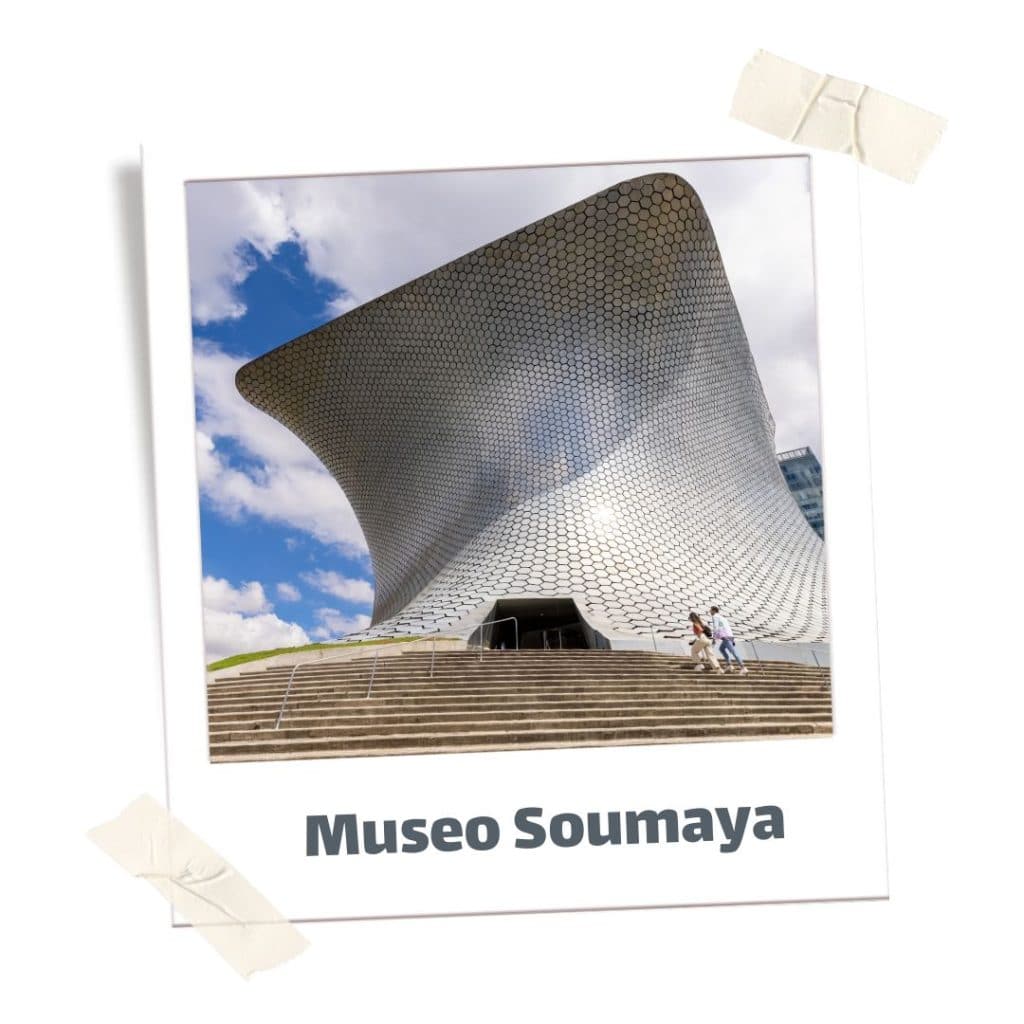
2. Soumaya Museum: A stunning modern art museum with works by Rodin, Rivera, and Dalí. (Free entry!)
3. Paseo de la Reforma & Ángel de la Independencia: Iconic landmarks, street vendors, and city life at its best.
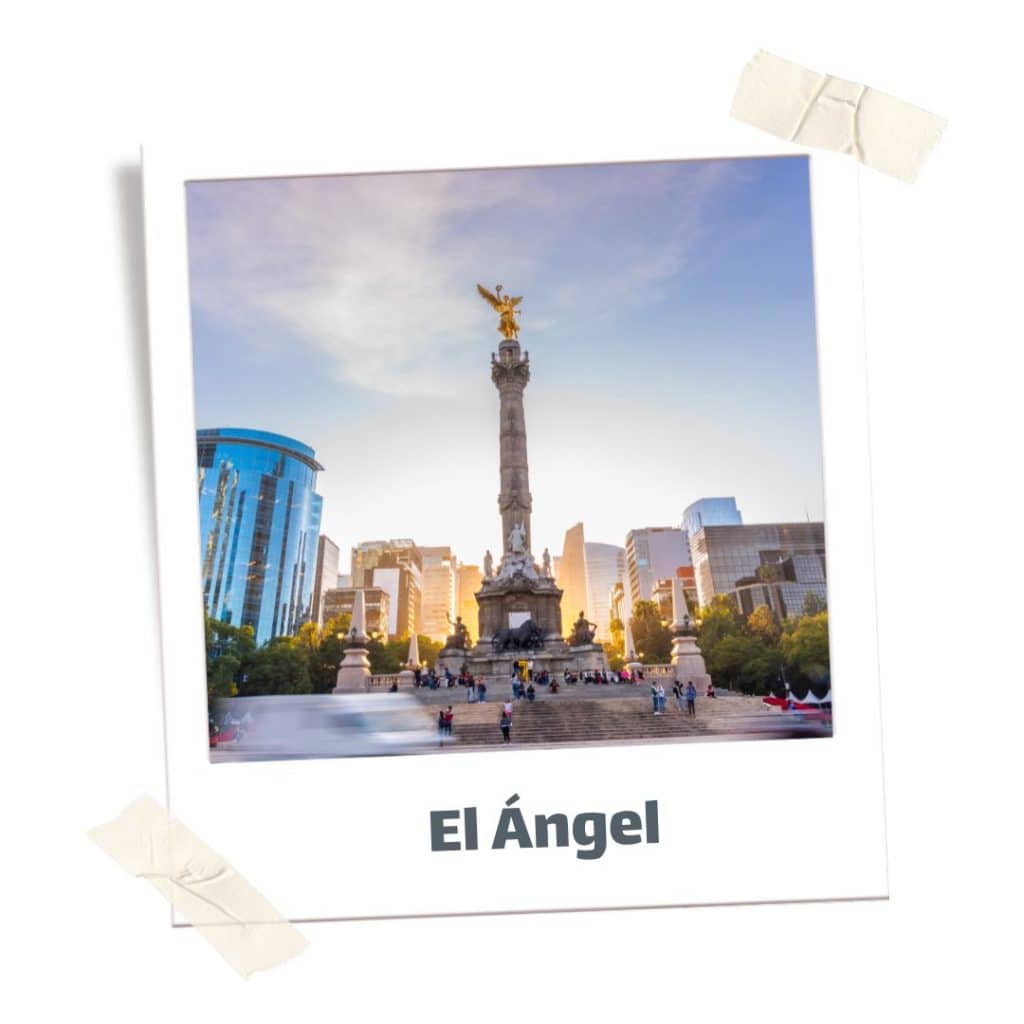
4. Chapultepec Park & Castle: A massive green space home to museums, lakes, and the only royal castle in the Americas.
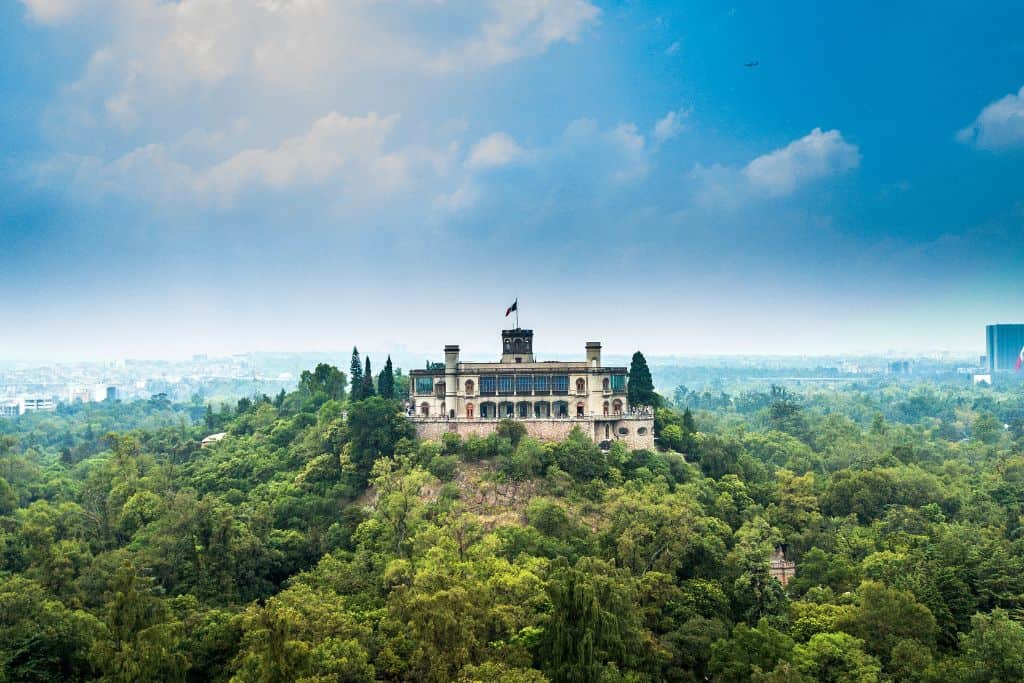
Chapultepec Park, Mexico City
Two-Days Embracing Mexico City
Mexico City is not just a stopover on your way to the beach – it’s an experience in itself!
In just two days, you’ll dive into its deep Indigenous history, vibrant food scene, and electric cultural energy.
This two-day Mexico City itinerary is about connecting to the past, supporting local communities, and experiencing CDMX in a meaningful way.
You’ll leave with a full heart, new memories, and the feeling that this incredible city will call you back again.
✨Keep Exploring Mexico Magic✨
👉✨ 7-Day Ultimate Mexico Itinerary: From Mexico City to Oaxaca
👉✨ Top 10 Best Places to Visit in Mexico
👉✨ 3 Days in Oaxaca: The Best Things to Do for First Timers in 2024
